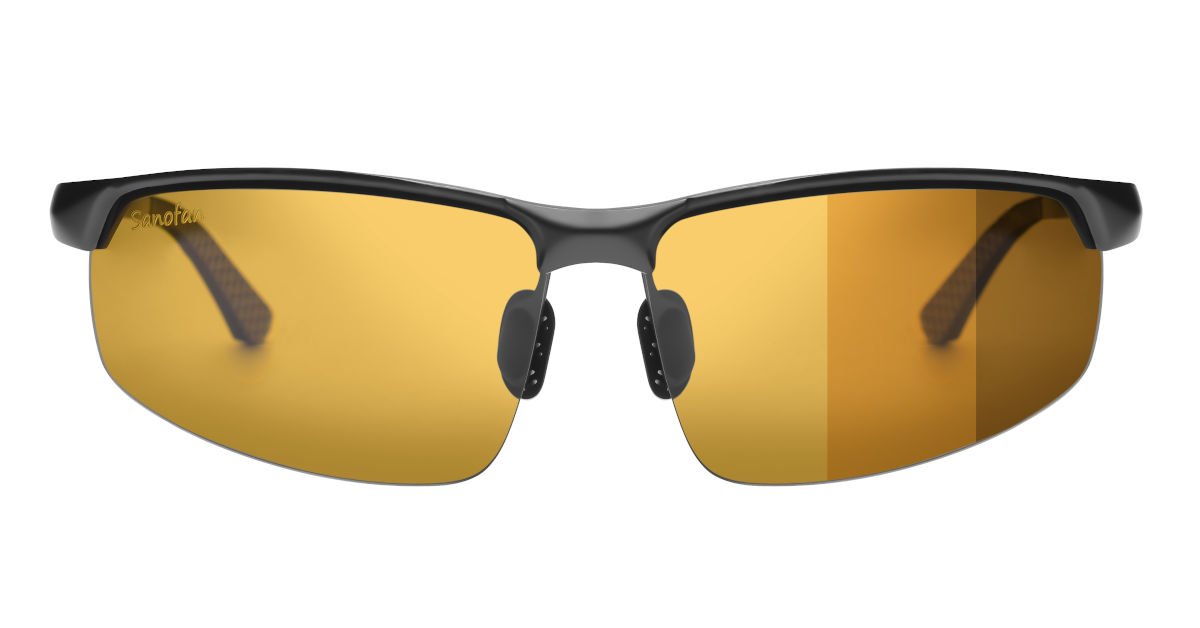The best color lens for fishing is the amber lens, as it provides optimum visual clarity and enhances contrast in different types of water and light conditions. When fishing, it is important to have a lens color that allows you to see underwater objects, such as fish and rocks, clearly.
The amber lens helps to cut glare and reduce strain on your eyes, increasing your chances of spotting fish and improving your overall fishing experience. Its ability to enhance contrast in both bright and low-light environments makes it the ideal choice for anglers.
Additionally, the amber lens is suitable for a variety of fishing conditions, including freshwater and saltwater fishing, making it a versatile option for all types of anglers.

Credit: www.sanofan.com
Understanding How Lens Color Affects Fishing Vision
The Impact Of Lens Color On Fishing Vision
When it comes to fishing, having clear vision is crucial. Not only does it help you locate fish in the water, but it also enhances your overall fishing experience. Lens color plays a significant role in determining the quality of your vision while fishing.
Different lens colors transmit light differently in water, affecting your ability to see clearly. Understanding how lens color affects fishing vision can help you choose the right lenses for your fishing needs.
How Different Colors Transmit Light In Water
The interaction between light and water has a profound impact on how we perceive our surroundings while fishing. Here’s a breakdown of how different lens colors transmit light in water:
- Amber lens:
- Enhances contrast and provides excellent visibility in low-light conditions.
- Filters out blue light and enhances red and green light, making it ideal for overcast days or fishing in early morning or late evening.
- Grey lens:
- Offers true color perception and reduces glare.
- Provides excellent visibility in bright, sunny conditions.
- Recommended for fishing in open water or on clear, sunny days.
- Copper/brown lens:
- Enhances depth perception and improves contrast in various light conditions.
- Filters out blue light and provides a warm tint to enhance visibility and reduce eye strain.
- Yellow lens:
- Increases visual clarity and depth perception.
- Filters out blue light and improves contrast, making it suitable for low-light conditions or overcast days.
Exploring The Science Behind Lens Color And Its Effect On Visibility
The science behind lens color and its effect on fishing visibility lies in how different colors absorb and transmit light. Here’s a closer look at how lens color affects visibility:
- Absorption:
- Lens color determines which wavelengths of light are absorbed or blocked.
- Each lens color absorbs or blocks specific colors and wavelengths, affecting how light is transmitted through the lens.
- Contrast enhancement:
- Certain lens colors enhance contrast by filtering out specific colors.
- By reducing glare and filtering out certain wavelengths, lens colors can enhance color perception and make objects stand out more.
- Light transmission:
- Different lens colors transmit light differently, which alters the way we perceive our surroundings.
- Lens colors that transmit specific wavelengths of light can improve visibility in certain lighting conditions, enhancing the ability to spot fish and objects underwater.
Understanding how lens color affects fishing vision empowers you to make informed decisions when choosing the best lenses for your fishing adventures. Consider the lighting conditions and your specific needs to select a lens color that optimizes your fishing experience.
Whether you’re fishing in bright sunlight or overcast conditions, the right lens color can make a significant difference in your ability to see clearly and enjoy a successful fishing trip.
Comparing The Best Lens Colors For Fishing Vision
Amber Lenses: Enhancing Contrast And Depth Perception
Amber lenses are a popular choice among anglers for their ability to enhance contrast and depth perception. These lenses are known for their ability to provide better visibility in various lighting conditions, making them ideal for fishing. Here are the key points to consider when choosing amber lenses:
- Improved contrast: Amber lenses filter out blue light, resulting in enhanced contrast. This allows you to better distinguish objects and fish underwater, improving your overall fishing experience.
- Enhanced depth perception: By reducing glare and increasing contrast, amber lenses enhance depth perception. This makes it easier to judge distances accurately, enabling you to target fish more effectively.
- Versatile in low-light conditions: Amber lenses excel in low-light conditions, such as early mornings or overcast days. They provide a warm tint that brightens your surroundings while minimizing eye strain.
- Suitable for various water conditions: Whether you’re fishing in freshwater or saltwater, amber lenses can help you see through different water conditions, such as muddy or murky waters.
Gray Lenses: Reducing Glare And Maintaining True Color Perception
When it comes to reducing glare and maintaining true color perception, gray lenses are a top choice among fishing enthusiasts. These lenses offer several advantages, making them a reliable option for your fishing adventures. Here’s what you should know about gray lenses:
- Glare reduction: Gray lenses effectively reduce glare from the water surface, allowing you to see clearly and comfortably even on the sunniest days. By minimizing eye strain caused by excessive brightness, you can fish for longer periods without discomfort.
- True color perception: Unlike some tinted lenses, gray lenses maintain true color perception, ensuring that you see the environment as it is. This is particularly important when assessing the color of fish, bait, or underwater surroundings, helping you make accurate judgments.
- Versatile under different light conditions: Gray lenses perform well in a variety of lighting conditions. Whether it’s bright sunlight or overcast skies, their neutral tint provides consistent visibility without distorting colors.
- Ideal for open water fishing: If you frequently fish in open water, such as lakes or rivers without much vegetation, gray lenses can be advantageous. They excel at reducing surface glare and offer excellent overall clarity.
Copper Lenses: Enhancing Visual Clarity In Varying Light Conditions
Copper lenses have gained popularity among anglers for their ability to enhance visual clarity in various light conditions. Whether you fish in different weather conditions or during different times of the day, copper lenses can provide the following benefits:
- Improved contrast and depth perception: Copper lenses enhance contrast, making it easier to spot fish and underwater structures. This leads to better depth perception and more accurate judgments of distance.
- Enhanced visual acuity: Copper lenses effectively filter out blue light, resulting in sharper vision and reduced eye fatigue. This allows you to focus on your surroundings for extended periods without straining your eyes.
- Adaptive to changing light conditions: Copper lenses excel in varying light conditions as they provide a moderate tint. They darken slightly when the light is brighter and lighten up in lower light conditions, ensuring optimal visibility throughout the day.
- Suitable for both freshwater and saltwater fishing: Whether you’re fishing in clear freshwater or dealing with the reflective glare of saltwater, copper lenses offer versatility and adaptability to different water conditions.
Remember to consider your specific fishing environment, personal preference, and the targeted fish species when selecting the right lens color for your fishing needs. Each lens color has its own unique advantages, so choose the one that suits your requirements best.
Happy fishing!
Factors To Consider When Choosing The Best Lens Color For Fishing
When it comes to fishing, having the right pair of sunglasses with the perfect lens color can greatly enhance your experience on the water. The lens color you choose can affect your visibility, comfort, and overall performance while fishing. Here are some key factors to consider when selecting the best lens color for fishing:
Water Conditions And Visibility
- Clear lenses: These lenses are ideal for fishing in clear water conditions as they provide maximum light transmission and maintain true color perception. They are great for spotting fish and observing underwater structure.
- Amber lenses: Amber lenses are perfect for low-light conditions or when there is a moderate level of cloud cover. They enhance contrast and improve depth perception, allowing you to see more details in the water.
- Gray lenses: Gray lenses are versatile and suitable for various water conditions. They reduce glare and provide true color perception, making them a popular choice for fishing in sunny conditions or on bright days.
- Copper lenses: Copper lenses enhance color contrast and are excellent for fishing in shallow water. They excel in partly cloudy conditions, providing better visibility and reducing eyestrain.
Time Of Day And Weather Patterns
- Yellow lenses: Yellow lenses improve visibility and depth perception in low-light conditions, such as early morning or late evening fishing. They also enhance contrast and are effective for fishing in foggy or hazy weather.
- Blue lenses: Blue lenses are perfect for fishing during bright, sunny days. They reduce glare from the water’s surface and enhance color perception, making it easier to spot fish and detect subtle movements.
- Green lenses: Green lenses provide excellent color contrast and are suitable for fishing in partly cloudy weather. They offer good glare reduction and enhance visibility, allowing you to spot fish more easily.
Personal Preference And Fishing Environment
- Mirrored lenses: Mirrored lenses have a reflective coating on the outside that keeps glare to a minimum. They are ideal for fishing in extremely bright conditions, such as open water or offshore fishing.
- Polarized lenses: Polarized lenses are a popular choice for fishing as they reduce glare and improve clarity. They eliminate reflections from the water’s surface, enabling you to see beneath the water and spot fish more effectively.
- Photochromic lenses: Photochromic lenses adapt to changing light conditions, automatically adjusting their tint. They are convenient for fishing in varying weather conditions throughout the day.
- Wrap-around frames: Wrap-around frames provide maximum coverage and protection from peripheral light. They are suitable for fishing in windy conditions or when there is a lot of sunlight coming from the sides.
Remember, choosing the best lens color for fishing ultimately depends on your personal preference, the fishing environment, and the prevailing weather conditions. Experiment with different lens colors to find the one that suits your needs and enhances your fishing experience.
Conclusion
When choosing the right lens color for fishing, it’s essential to consider various factors. The type of water you’ll be fishing in, the weather conditions, and your personal vision requirements all play a role in determining the best lens color for you.
Different lens colors enhance visibility in specific circumstances, such as amber lenses enhancing contrast in low-light conditions or grey lenses reducing glare on bright, sunny days. Green lenses are great for cutting through water glare and provide excellent depth perception.
Blue lenses are suitable for fishing in shallow waters or overcast days. Ultimately, it’s important to try different lens colors to find the one that works best for you and gives you the most comfortable and clear vision when out on the water.
So, next time you head out for a fishing trip, don’t forget to choose the right lens color to enhance your fishing experience.






